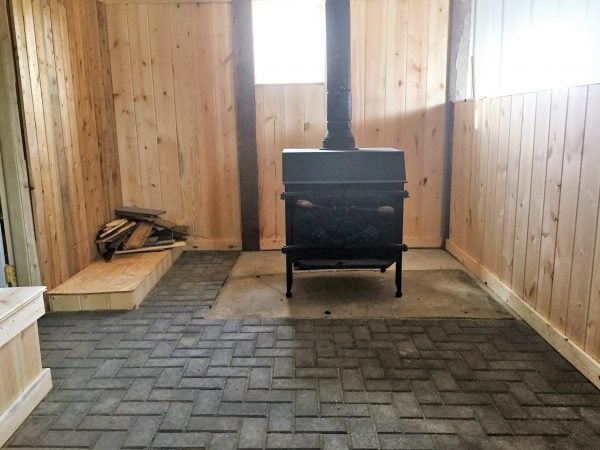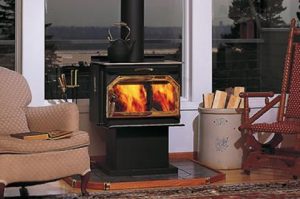
Using a wood stove during the winter is a great way to supplement your central heating system and add atmosphere to your home. Just like inspecting and repairing a boiler or furnace, wood stove maintenance is necessary to keep it functioning properly and safely. If you’re wondering what you can do to improve your own wood stove maintenance, here are a few suggestions to boost efficiency and keep things running smoothly.
Wood Stove Maintenance: To Burn or Not to Burn
Be aware of the fuel limitations of your stove. Though some stoves are designed to burn both coal and wood, most wood stoves are meant to burn wood only. Do not burn driftwood, trash, treated wood, artificial logs, or any product containing zinc, sulfur, lead, or plastics as they will damage the catalytic combustion. Burning trash in a wood stove is dangerous for its potential to start a chimney fire, and also because the trash could contain plastics or other elements which emit harmful gases.
It is best to burn only seasoned wood for maximum heat release, less creosote buildup, and economy. Avoid burning green, unseasoned wood which may contain up to 50 percent of its weight in moisture and needs to be burned off before the heat can reach your house.
Wood Stove Maintenance: Chimneys, Flues, and Temperatures
A stack thermometer installed on the stove flue will give you information on gases leaving the stove. Monitoring their levels is important for efficiency and pollution control. 300 to 400 degrees Fahrenheit is an optimum range.
Build small, hot fires for maximum burning of volatile gases and for fewer air quality and other safety problems. Your increased effort and attention are well worth the effort. Keep the stove’s air-intake vents clear by removing excess ashes. This also lowers the level of oxygen required for an efficient fire. Observe the amount of smoke coming from your chimney. The less smoke, the cleaner the burning process.
Simplify Wood Stove Maintenance by Increasing Your Home’s Efficiency
Your wood stove maintenance is directly affected by how much you need to use it. A stove that is used only once or twice a month will obviously require less maintenance than one that is used for several hours multiple times a week. Reducing the amount of heat that escapes your house as well as the amount of unwanted cold air that enters it will cut down on your wood stove maintenance needs, and decrease your overall heating costs. It helps greatly if your house is well-insulated, and window and door leaks are corrected with caulking, weather stripping, etc.
Ready to start your wood stove care?
Find ProsWood Stove and Chimney Inspections
It is strongly recommended to have wood stoves and chimneys inspected at least once each year by a professional stove dealer or chimney sweep. They should check for all signs of deterioration such as cracks, leaks, warping, baffle gaps, and creosote in the chimney. Chimney fires can be extremely devastating; getting regular inspections is a good way to reduce the risk of chimney fires and identify any existing problems. It is a good idea to get your wood stove and chimney inspected before the heating season begins so your stove will be in top working order for the cold months ahead.

 Turn Your Fireplace into a Work of Art with a Fireplace Surround
Turn Your Fireplace into a Work of Art with a Fireplace Surround  Preventive Maintenance: Chimneys
Preventive Maintenance: Chimneys  Chimney Bombs
Chimney Bombs  Stoking the Fire: Fireplace Remodels
Stoking the Fire: Fireplace Remodels  Choose the Best Fireplace for Your Home
Choose the Best Fireplace for Your Home 

what product is best to apply to the metal to prevent rust on an outdoor wood heater?